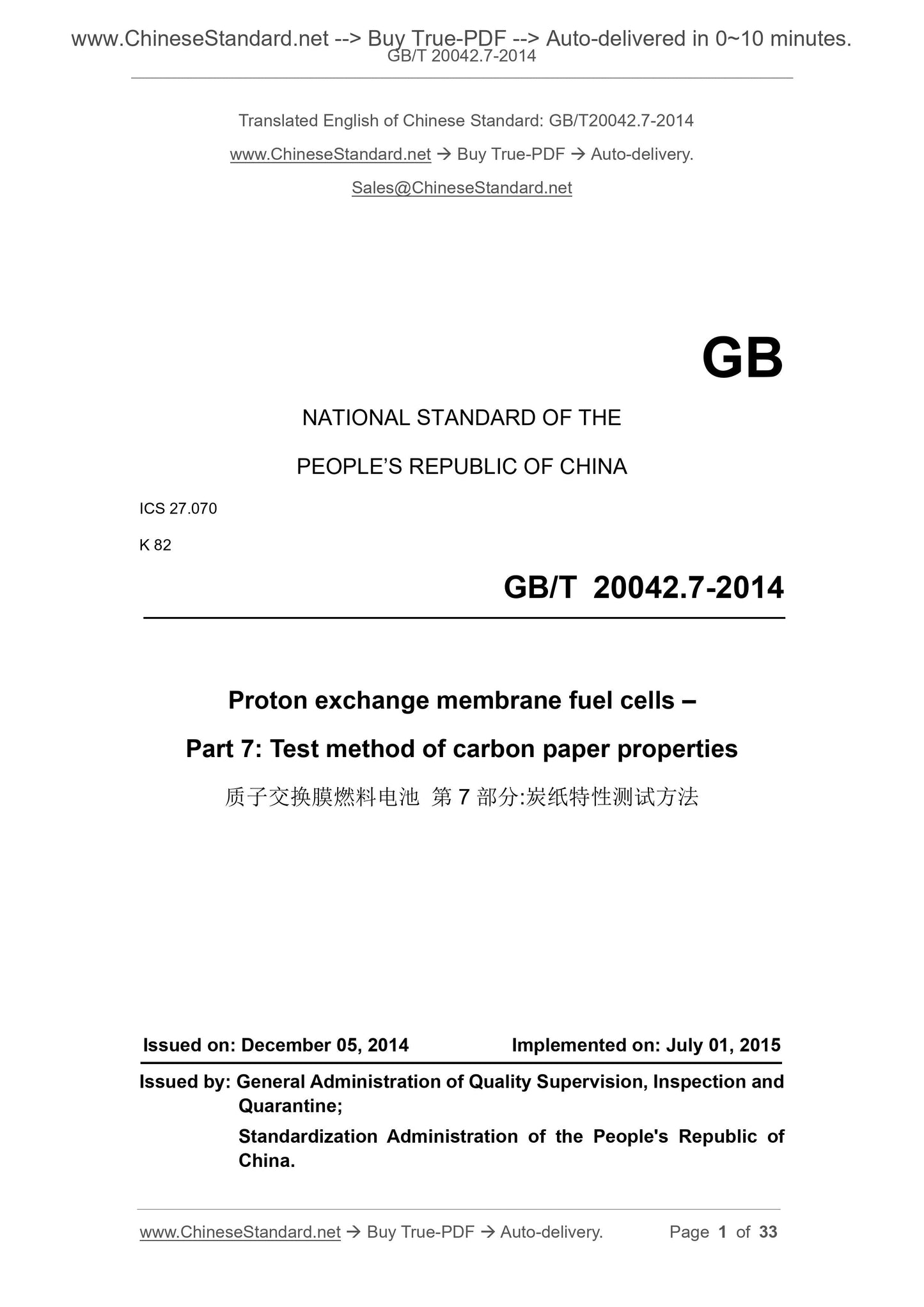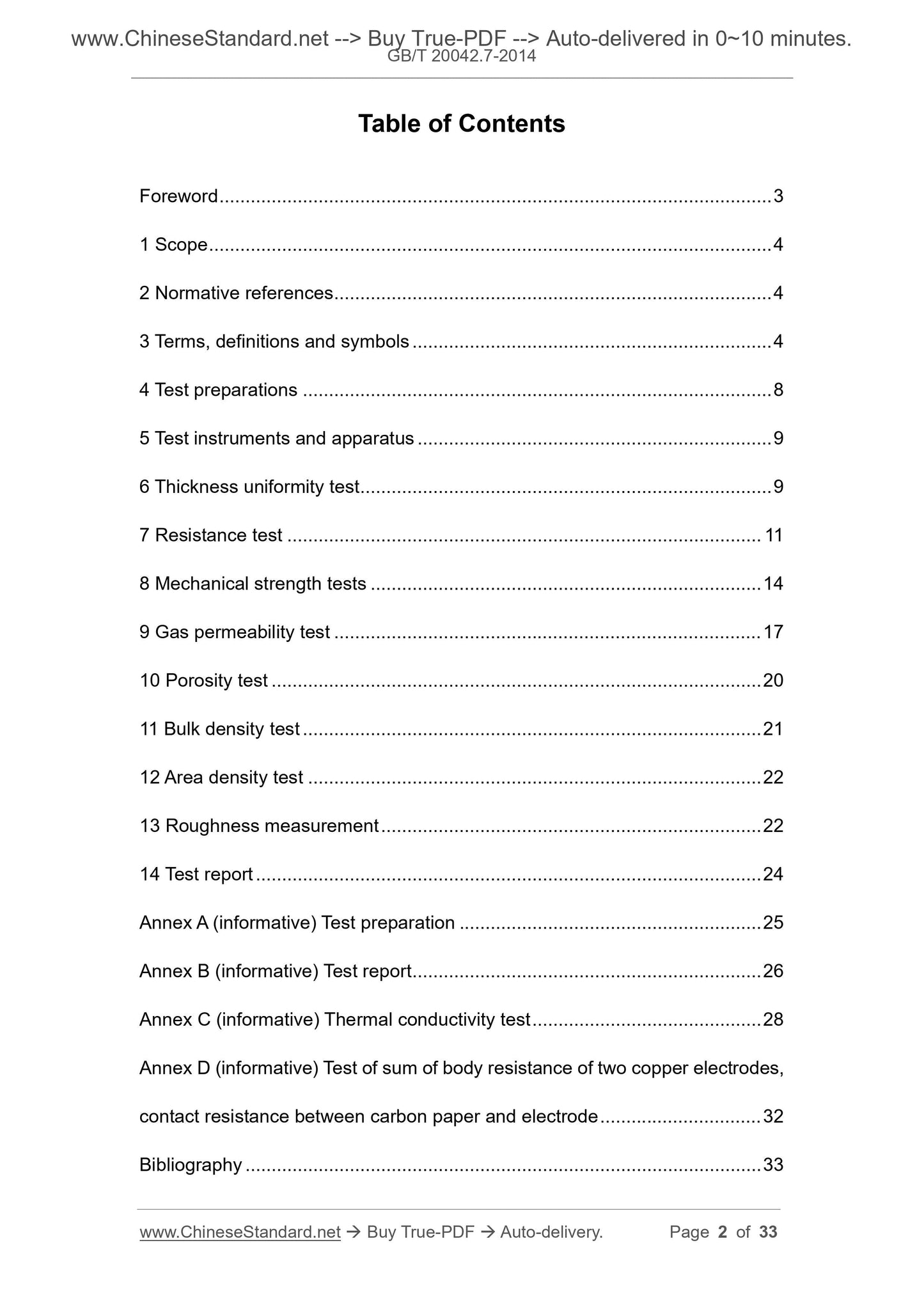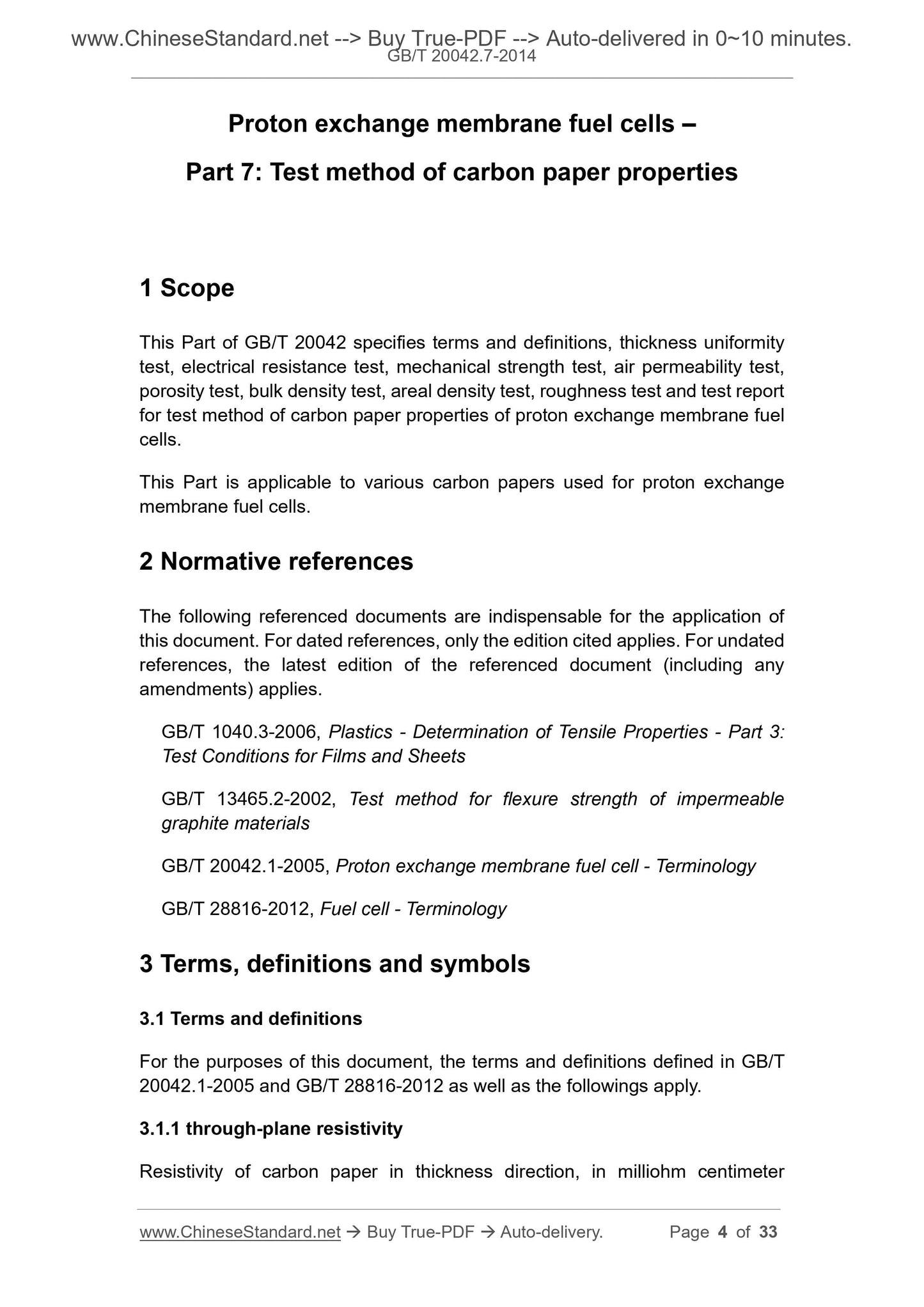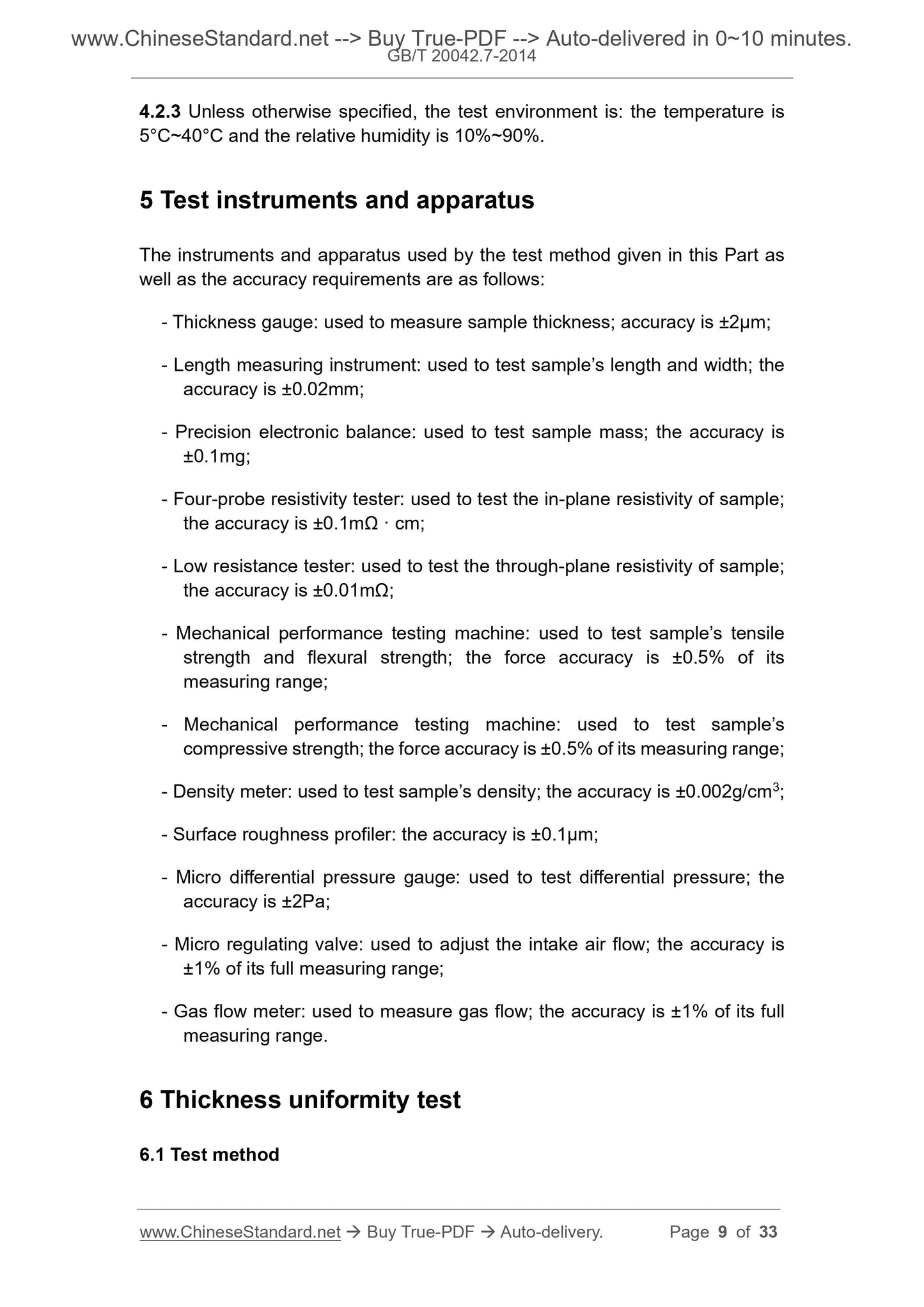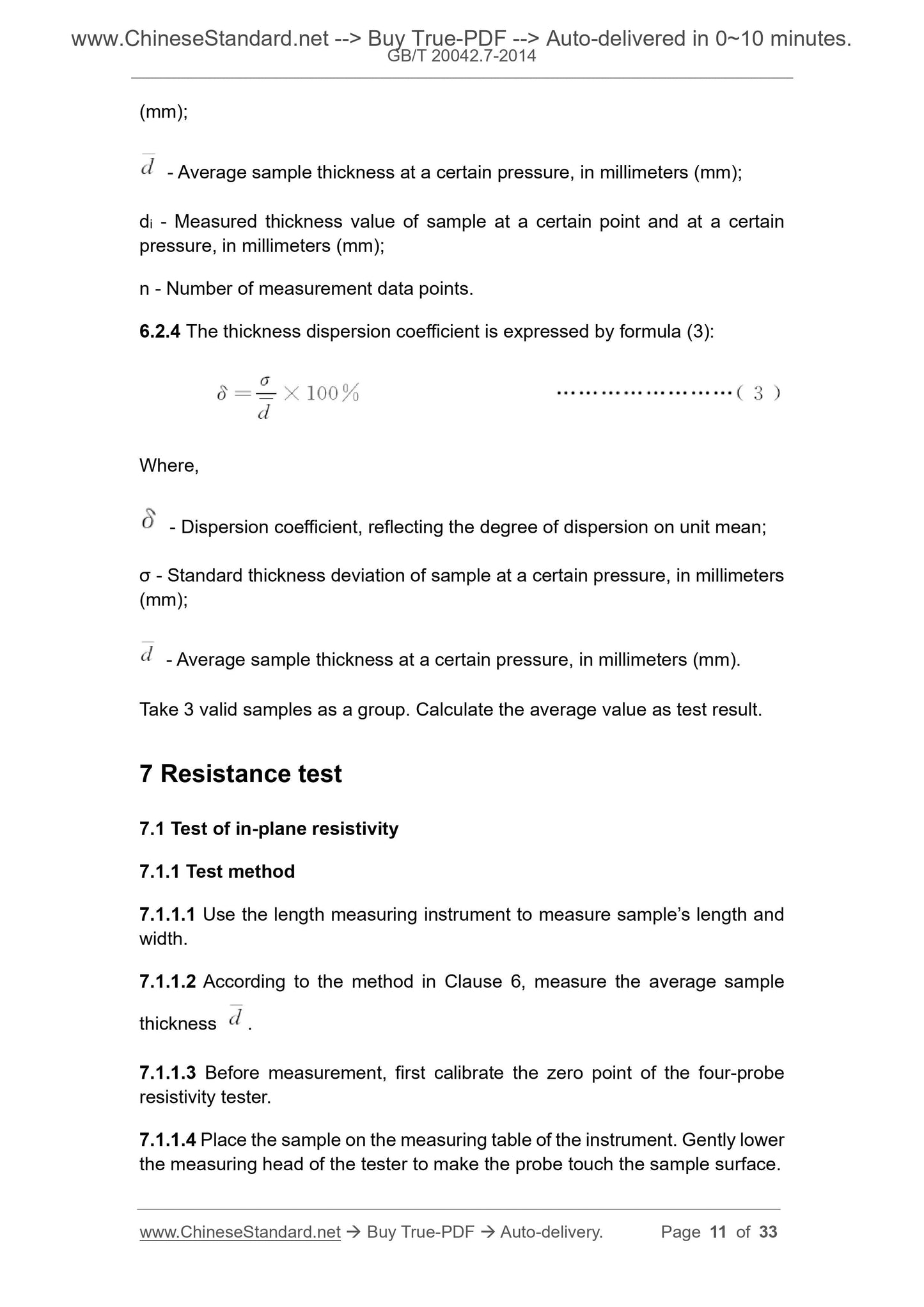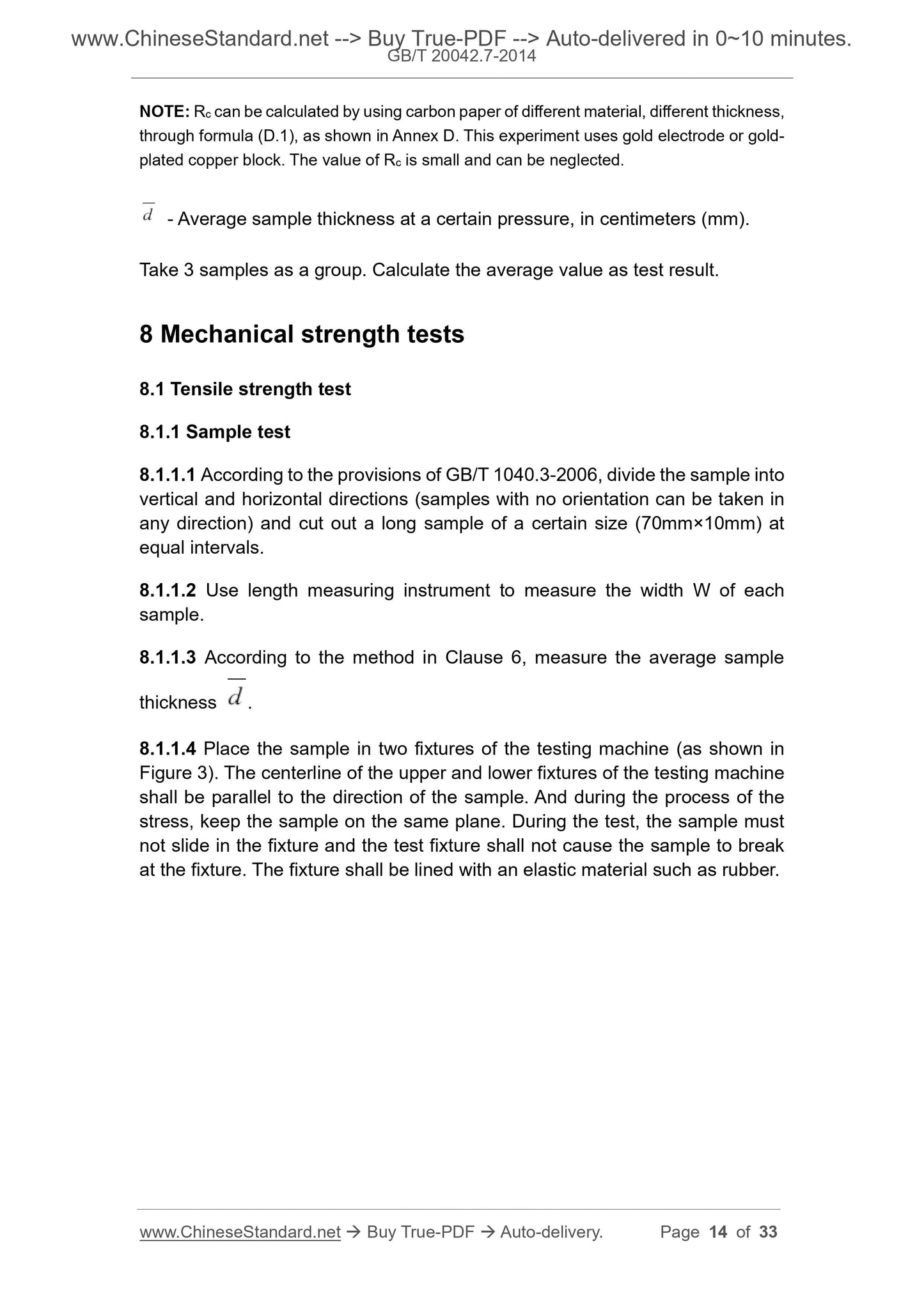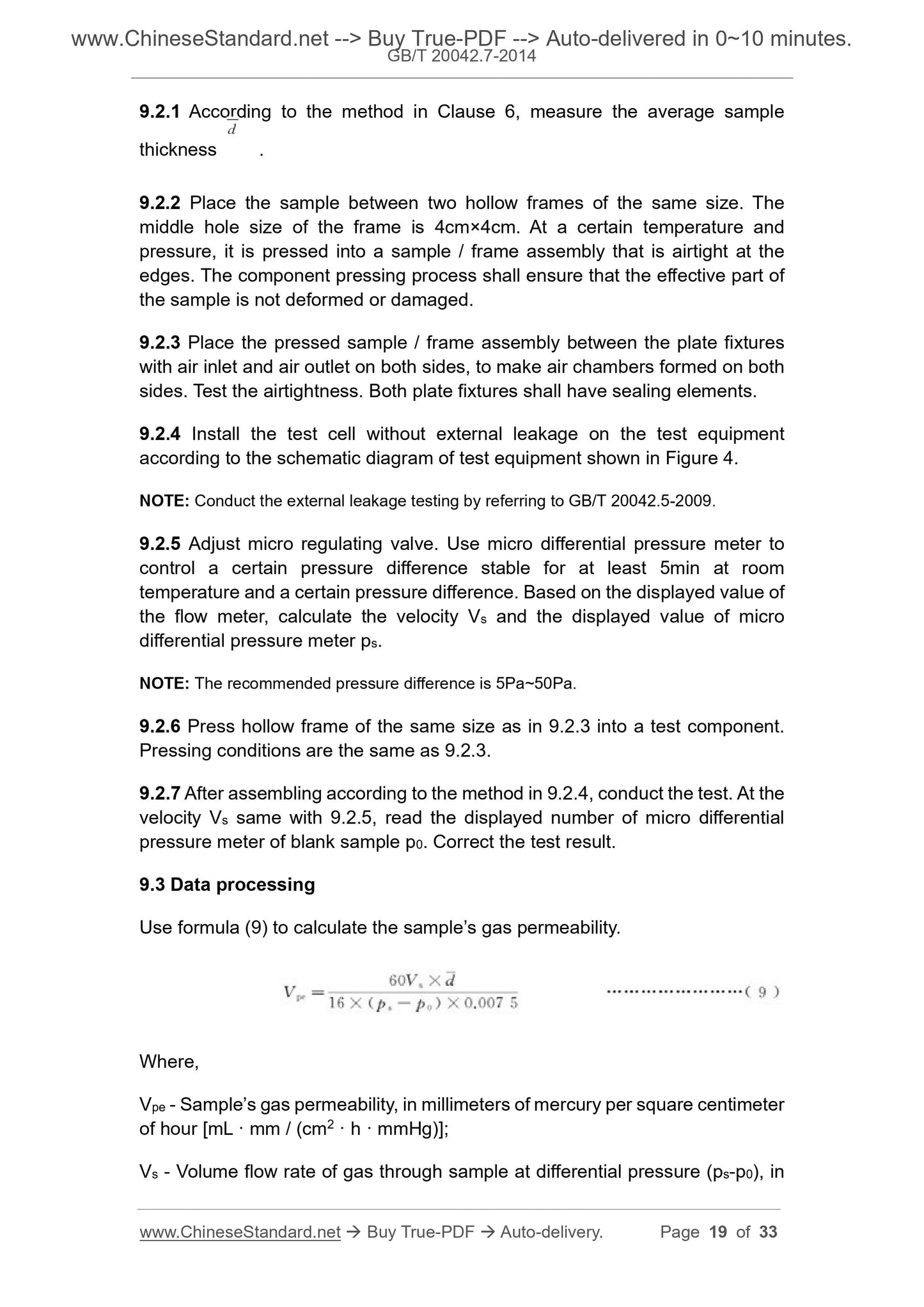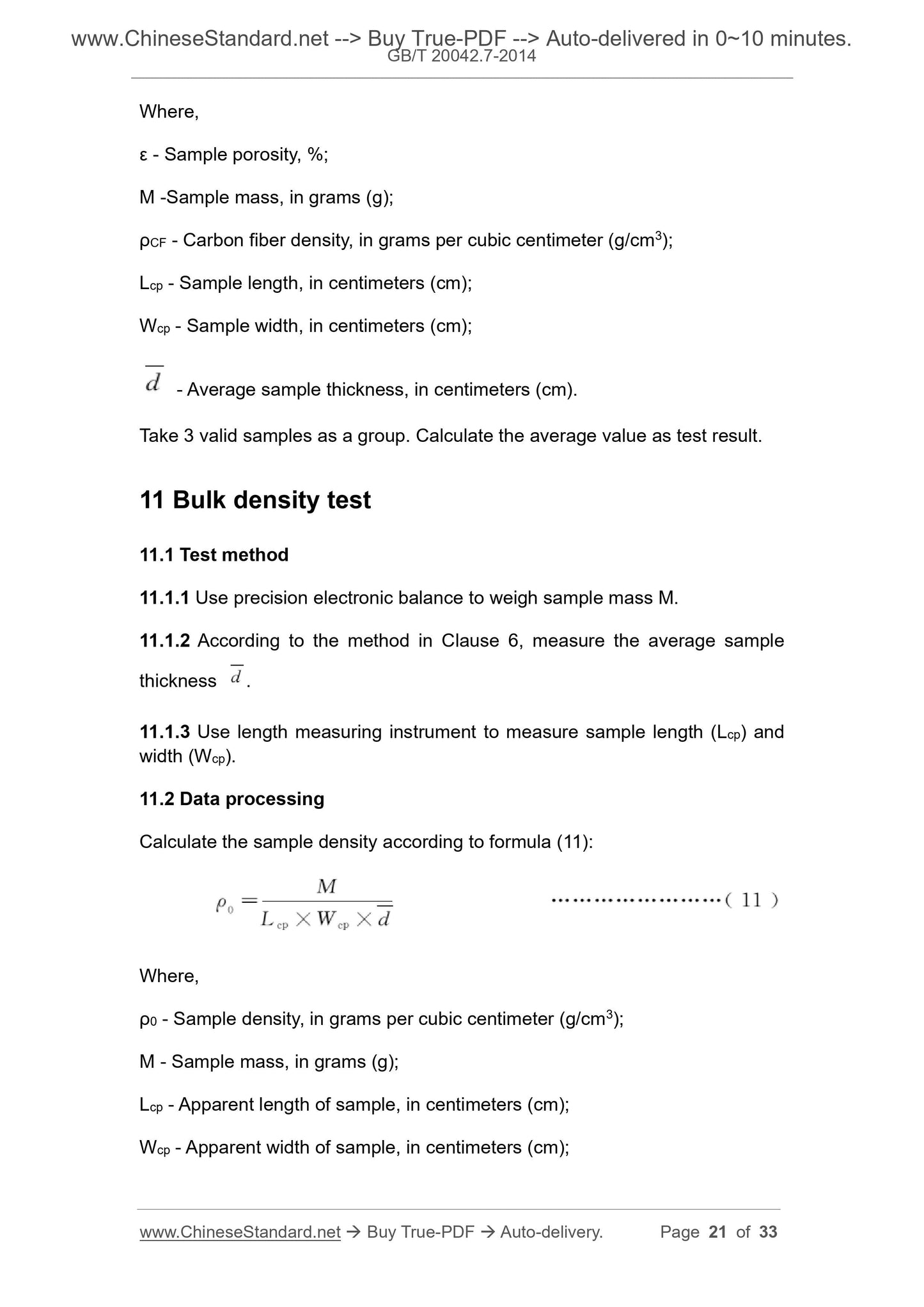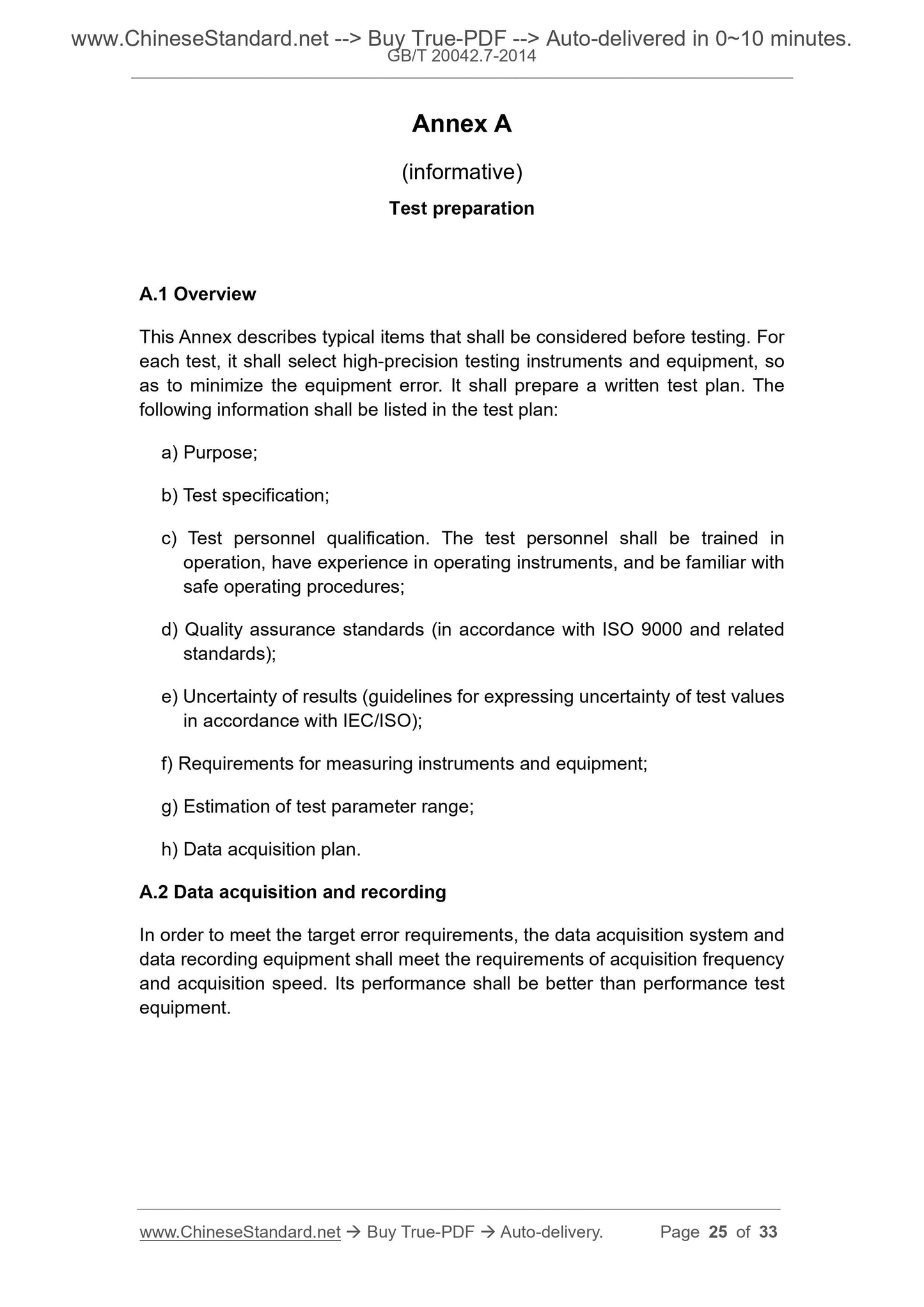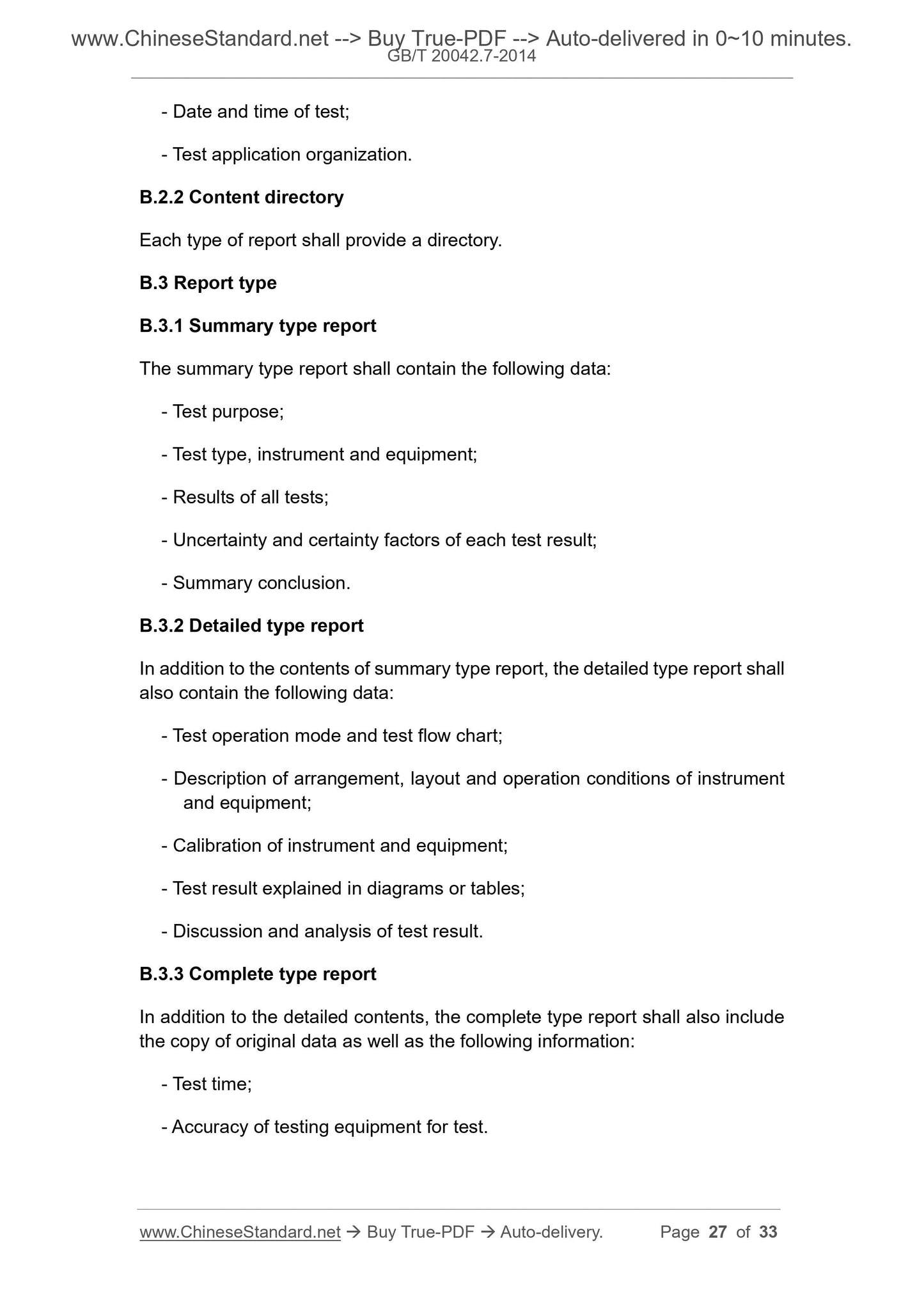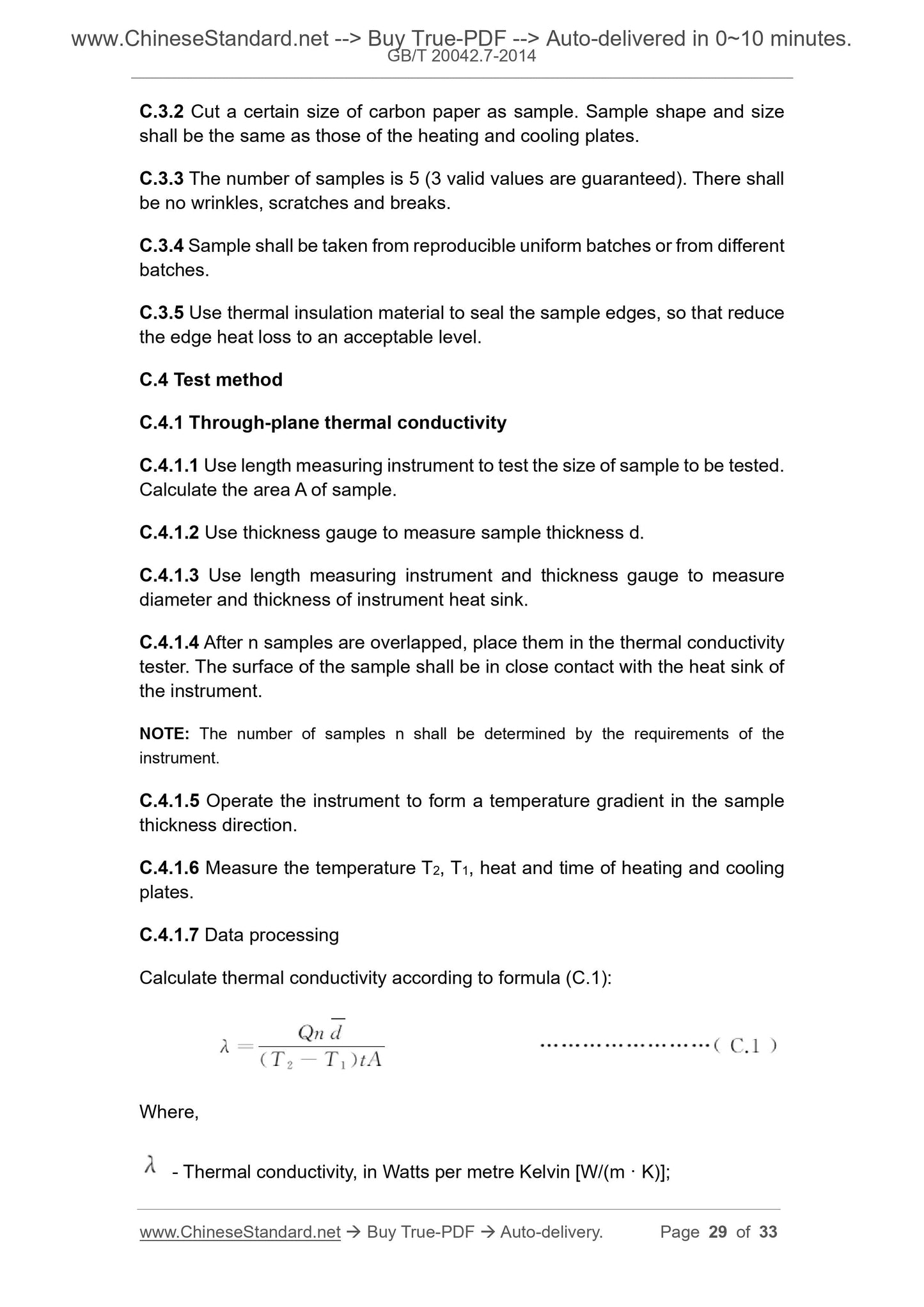1
/
of
12
www.ChineseStandard.us -- Field Test Asia Pte. Ltd.
GB/T 20042.7-2014 English PDF (GB/T20042.7-2014)
GB/T 20042.7-2014 English PDF (GB/T20042.7-2014)
Regular price
$325.00
Regular price
Sale price
$325.00
Unit price
/
per
Shipping calculated at checkout.
Couldn't load pickup availability
GB/T 20042.7-2014: Proton exchange membrane fuel cells - Part 7: Test method of carbon paper properties
Delivery: 9 seconds. Download (and Email) true-PDF + Invoice.Get Quotation: Click GB/T 20042.7-2014 (Self-service in 1-minute)
Newer / historical versions: GB/T 20042.7-2014
Preview True-PDF
Scope
This Part of GB/T 20042 specifies terms and definitions, thickness uniformitytest, electrical resistance test, mechanical strength test, air permeability test,
porosity test, bulk density test, areal density test, roughness test and test report
for test method of carbon paper properties of proton exchange membrane fuel
cells.
This Part is applicable to various carbon papers used for proton exchange
membrane fuel cells.
Basic Data
| Standard ID | GB/T 20042.7-2014 (GB/T20042.7-2014) |
| Description (Translated English) | Proton exchange membrane fuel cells - Part 7: Test method of carbon paper properties |
| Sector / Industry | National Standard (Recommended) |
| Classification of Chinese Standard | K82 |
| Classification of International Standard | 27.070 |
| Word Count Estimation | 25,271 |
| Date of Issue | 12/5/2014 |
| Date of Implementation | 7/1/2015 |
| Quoted Standard | GB/T 1040.3-2006; GB/T 13465.2-2002; GB/T 20042.1-2005; GB/T 28816-2012 |
| Regulation (derived from) | Announcement of Newly Approved National Standards 2014 No. 27 |
| Issuing agency(ies) | General Administration of Quality Supervision, Inspection and Quarantine of the People's Republic of China, Standardization Administration of the People's Republic of China |
| Summary | This Standard specifies the terms and definitions proton exchange membrane fuel cell carbon paper characteristics of the test method, the thickness uniformity of the test, resistance test, mechanical strength test, permeability test, porosity test, the ap |
Share
